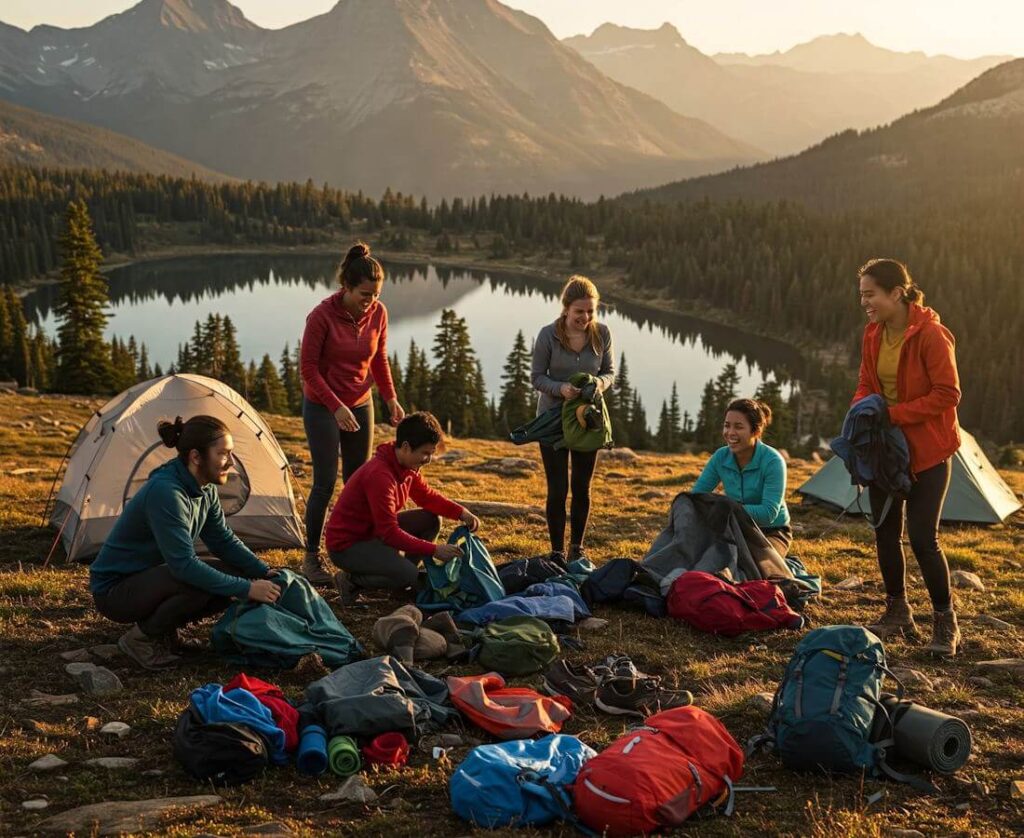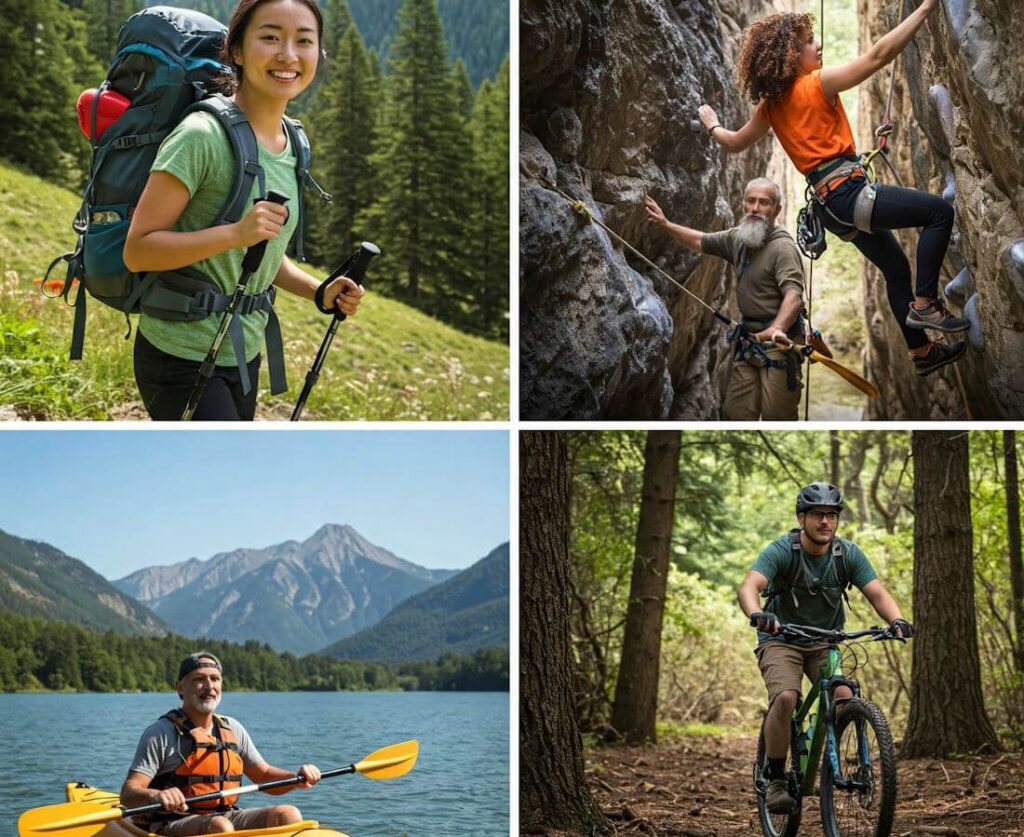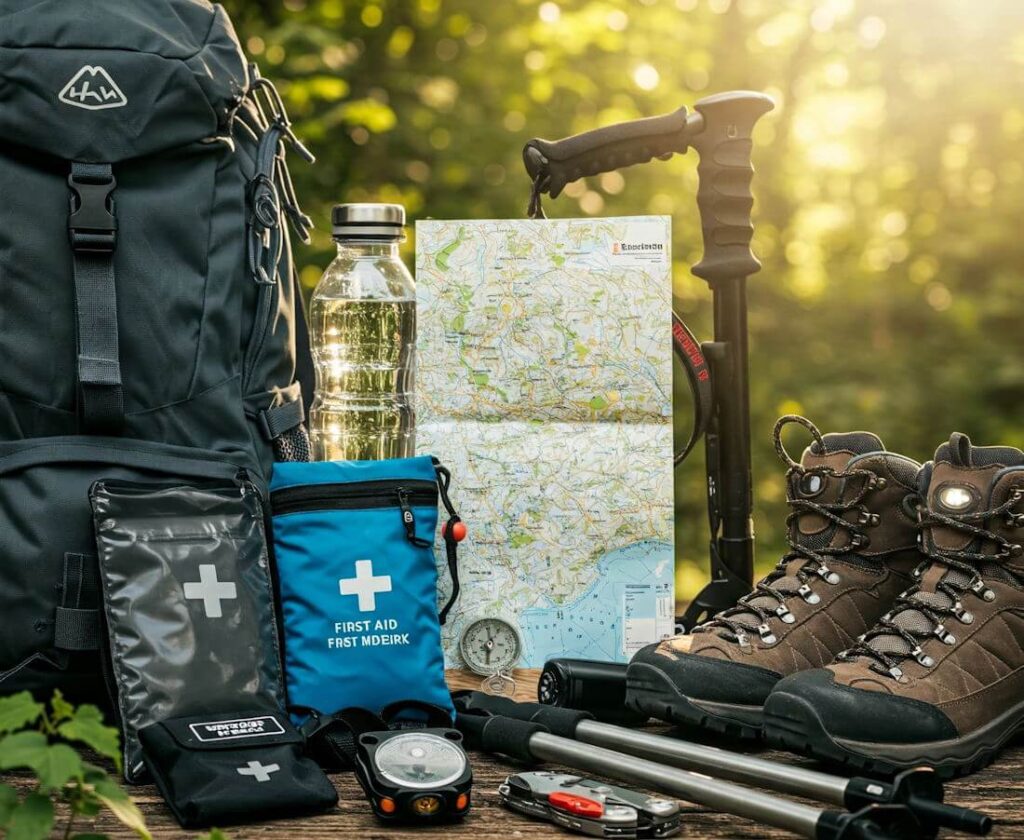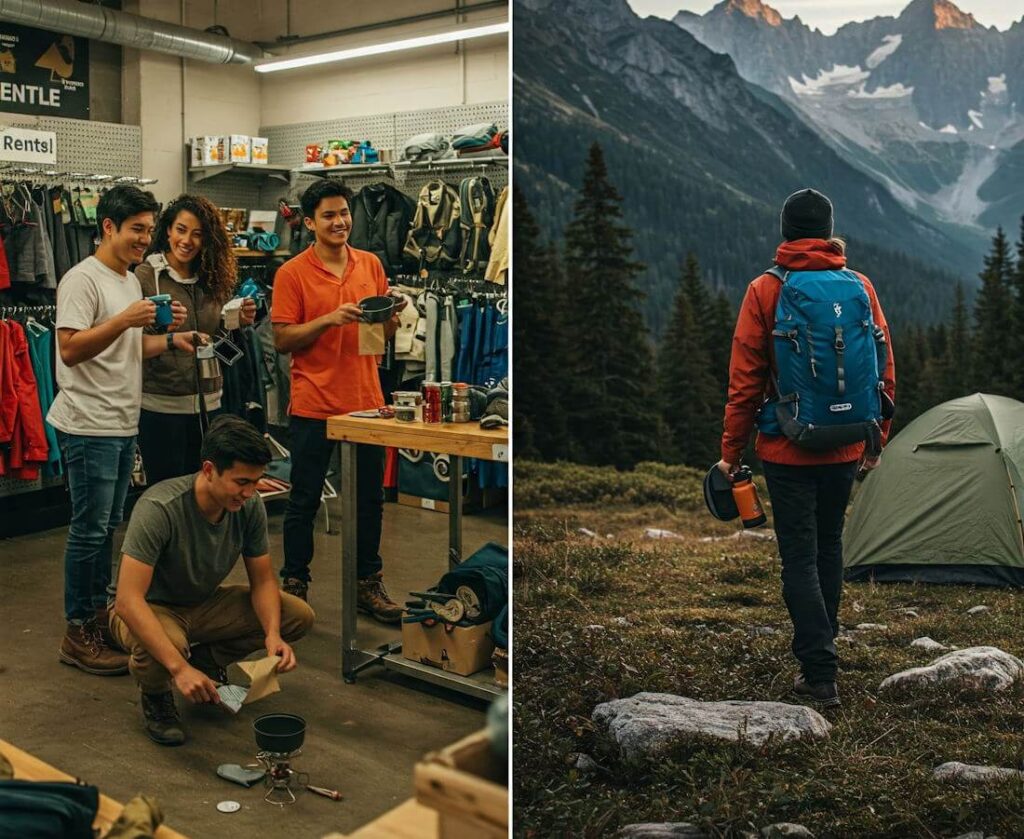Winter sports provide a thrilling escape into the natural world, but they also require appropriate gear to ensure a safe and enjoyable experience. With the season’s first snowfall, many enthusiasts find themselves contemplating the best equipment for their outdoor adventures. Renting gear for winter sports has become an increasingly popular option for both novice and experienced athletes alike, largely due to the multitude of benefits it offers. One of the most compelling reasons to consider winter sports gear rental is cost-effectiveness. Purchasing high-quality equipment can be financially demanding, particularly for those who partake in winter sports seasonally or infrequently. Renting allows individuals to access premium gear without the hefty price tag associated with ownership.
Additionally, renting gear offers the advantage of trying out a variety of equipment to find what best suits one’s style and needs. This flexibility is particularly beneficial for beginners who may still be determining which type of winter sports they will pursue most fervently. When renting, individuals have access to the latest models and technologies in the market, allowing them to experience innovations that may enhance their performance and enjoyment. Furthermore, reputable rental shops often provide expert guidance on proper fitting and usage, ensuring that participants are equipped with gear that maximizes comfort and safety.
Having the right gear is essential not only for improving performance, but also for safeguarding against potential injuries. Proper equipment tailored to an individual’s specific needs can significantly contribute to a safer winter sports experience. In this landscape of ever-evolving technologies and options within the winter sports industry, renting gear emerges as a pragmatic approach. Understanding the advantages of winter sports gear rental sets the stage for exploring further considerations essential to ensure a successful and fulfilling outdoor adventure.
Understanding Your Winter Sport Needs
When it comes to renting gear for winter sports, it is essential to first understand your specific needs based on the type of activity you will be participating in. Different sports, such as skiing, snowboarding, or snowshoeing, require distinct types of equipment tailored to their unique requirements. For instance, ski gear typically includes skis, boots, poles, and helmets, which are different from the snowboard setup that incorporates a board and specific bindings. Therefore, it is critical to identify the sport you will engage in to ensure you rent the correct equipment.
Another key factor to consider is your skill level. Beginners may need gear that is more forgiving and easier to handle, while advanced skiers or snowboarders often seek equipment that enhances performance and provides greater control. Personal preferences also play a significant role in gear selection. Some individuals may prefer a particular brand or style based on past experiences, while others may prioritize comfort, fit, or aesthetics in their gear. Understanding these personal attributes can aid in selecting the appropriate equipment that aligns with your expectations.
The frequency of your participation in winter sports should also influence your decisions when renting gear. If you plan to engage in these activities regularly, investing in high-quality gear might be worthwhile, even if that means renting more advanced equipment each time. Conversely, if you are a casual participant, opting for rental gear that is reliable yet economical can be the better choice. Ultimately, an assessment of these factors—the sport you are participating in, your skill level, preferences, and anticipated frequency of use—will provide guidance on selecting the most suitable rented gear for your winter sports adventures.
Essential Gear Types and Features
When engaging in winter sports, selecting the appropriate gear is critical for both safety and performance. Various types of equipment serve distinct functions, and understanding their key features can greatly enhance your experience on the slopes. This section explores the essential gear types and the important characteristics to consider for each.
First and foremost, skis are fundamental for skiing enthusiasts. Look for features such as ski length, shape, and width, which can affect maneuverability and stability. Shorter skis generally provide better control for beginners, while longer options are suitable for experienced skiers seeking speed. Additionally, the ski’s flexibility and construction materials can influence performance on different snow conditions.
For snowboarders, snowboards vary in shape and flex. Soft-flex boards are ideal for beginners as they offer easier turning capabilities, whereas stiffer boards cater to advanced riders looking for better edge control on steep slopes. Pay attention to the board’s width as well; a wider board prevents toe or heel drag for those with larger feet.
Boots are another crucial component, impacting comfort and performance across both skiing and snowboarding. Ensure they fit snugly without causing pressure points. Features such as insulation, waterproofing, and a good lacing system are essential for maintaining warmth and ensuring a secure fit during activities.
Poles are significant for skiers, providing balance and rhythm. When selecting poles, consider their length and material. Aluminum poles are durable yet heavier, while carbon fiber options offer lightweight performance with greater responsiveness.
Helmets and protective clothing serve the purpose of safety. Helmets should fit properly and offer features like ventilation and removable liners for comfort. As for clothing, look for insulation properties, waterproof and breathable fabrics, and adequate layering options to ensure warmth without compromising mobility.
Understanding the specific features associated with each type of winter sports gear not only helps in making informed decisions but also enhances overall performance and enjoyment on the slopes.
Choosing the Right Fit and Size
When renting gear for winter sports, selecting the appropriate fit and size is crucial to both comfort and performance. Equipment such as ski boots, snowboards, and jackets come in varying sizes across different brands, making it imperative to know your measurements before making a selection. A well-fitting piece of gear not only enhances your experience but also significantly improves your safety on the slopes.
To determine the right size, it’s essential to consider both your body measurements and the specific requirements of the gear you are renting. For instance, ski boots should fit snugly without causing pain, as overly tight boots can impede circulation, while too loose boots can lead to a loss of control. Utilize sizing charts provided by rental shops and try on various models to identify the best fit.
Another factor to bear in mind is the differences in sizing conventions among various brands. For example, one brand may label their gear as ‘medium,’ while another might size it as ‘large.’ As a result, you may find yourself fitting into different sizes depending on the manufacturer. Therefore, it is advisable to shop at rental outlets that allow you to try on multiple brands for comparison.
Comfort should never be sacrificed for the sake of performance. Ensure that your gear does not restrict movement and allows for proper range of motion, especially during activities like skiing or snowboarding, where agility is essential. Pay attention to aspects such as the fit of ski gloves, the snugness of helmet straps, and the room provided by jackets for layering.
Properly fitting winter sports gear can enhance not just your performance but also your overall enjoyment of the activity. Taking the time to ensure that your equipment fits well will pay off in comfort and confidence on the slopes, enabling you to fully immerse yourself in the thrill of winter sports.
Understanding Rental Policies and Procedures
When renting gear for winter sports, it is crucial to familiarize yourself with the rental policies and procedures laid out by the provider. Rental agreements serve as an essential document, detailing the terms under which the equipment is provided. Typically, these agreements outline the duration of the rental, payment terms, and the responsibilities of both the renter and the rental company.
One key aspect of any rental policy is the deposit requirements. Most rental companies require a deposit that may vary based on the type of gear rented, which serves as a security measure against potential damages or loss. Understanding the specific amount and the conditions under which deposits are refunded is vital. Verify the time frame for deposit return and if there are any fees that might be deduced for minor damages, as this can affect your overall costs.
Insurance options are another important consideration when renting winter sports equipment. Many rental providers offer insurance plans that cover damage or loss of gear, allowing you peace of mind while engaging in your activities. It is advisable to read through these insurance policies carefully to grasp what types of damages are covered and any deductibles you might have to pay in the event of a claim. Be cautious and proactive; consider not only the benefit of opting into insurance but also how it aligns with your specific needs.
Additionally, before leaving the rental facility with your gear, take the time to inspect the equipment thoroughly and note any pre-existing damages on the agreement. This practice ensures that you are not held responsible for damages incurred prior to your rental period. Understanding and adhering to rental policies and procedures not only enhances your rental experience but also safeguards against unexpected financial liabilities. Knowledge is empowering, and a thorough review of terms can lead to a more enjoyable winter sports experience.
Comparing Rental Prices and Value
When renting gear for winter sports, effectively comparing rental prices is essential to ensure you receive the best value for your investment. While it may be tempting to select a rental service purely based on low costs, several other factors should be taken into consideration. Understanding the balance between price and the overall value can significantly enhance your winter sports experience.
Primarily, it is crucial to assess the quality of the equipment being offered. Higher-priced rentals often correlate with superior gear that may provide better performance, durability, and safety. For instance, renting skis or snowboards from reputable brands might entail a higher rental fee, but this could result in a more enjoyable and safer experience on the slopes. Therefore, evaluating the condition and reputation of the rental gear is imperative.
Additionally, potential hidden costs should be factored into your rental evaluation. Some rental companies offer supplementary services such as equipment tuning and maintenance, which may not be included in the base price. These services can significantly impact the usability and comfort of the gear, thereby justifying a higher rental cost. Consider whether the rental provider includes services like fitting or adjustments in their pricing package, as these details can add value to your overall rental experience.
Moreover, exploring package deals can also yield substantial savings. Many rentals offer discounts when you rent multiple items, such as skis, poles, and boots together. This approach can lower your overall cost while providing you with a complete set of essential gear for your winter sports activities. Hence, evaluating package deals and their comparative prices can lead you to the best rental option, improving your experience without overspending.
In summary, while cost is a primary factor when renting winter sports gear, it is essential to look beyond mere price. Evaluating the quality, services offered, and package deals can lead to a more well-rounded and satisfactory rental experience.
Testing and Inspecting Gear Before Renting
Before venturing onto the slopes, it is crucial to thoroughly test and inspect winter sports gear to ensure quality, functionality, and safety. Renting equipment can be a viable option for those who may not wish to invest in their own gear, but the responsibility for selecting quality equipment remains paramount. This process begins with a close examination of each piece of gear in terms of wear and tear.
When inspecting items such as skis, snowboards, or boots, check for any significant scratches, dents, or cracks that may affect performance. The presence of such damage can indicate that the equipment may not function optimally, potentially compromising the user’s safety. Ensure the bindings, particularly for skis and snowboards, are properly functioning and securely attached. A faulty or loose binding can lead to severe accidents on the slopes.
Cleanliness is another essential aspect to consider when renting gear. Equipment that appears poorly maintained is often a telltale sign that it may not have been properly cared for in the past. Inspect for signs of dirt, grime, or mold, particularly in areas that could harbor bacteria, such as ski boots. Clean gear not only enhances safety but also improves comfort during use.
Additionally, it is advisable to take the time to try on the gear before finalizing the rental. This includes ensuring that boots fit snugly without causing discomfort and that all straps and adjustments function correctly. Properly fitting gear enhances stability and control, enabling users to enjoy their winter sports experience to the fullest.
By following these essential tips for testing and inspecting rental gear, skiers and snowboarders can ensure they are well-prepared for a safe and enjoyable adventure on the slopes.
Local Rental Shops vs. Online Rentals
When it comes to renting gear for winter sports, potential customers often weigh the options between local rental shops and online rental services. Each choice presents distinct advantages and disadvantages that can influence the overall experience of securing the necessary equipment.
Local rental shops offer a more personalized service that online platforms often cannot replicate. Customers can benefit from expert advice from staff who are not only knowledgeable about the equipment but also passionate about winter sports. This personal interaction allows for tailored recommendations, ensuring that you select gear that fits your specific needs. Additionally, trying on or testing equipment in-store can significantly minimize the risks associated with ill-fitting gear or subpar quality.
However, the convenience of online rentals cannot be overlooked. Online retailers typically present a larger variety of gear, often at competitive prices, which can appeal to budget-conscious renters. The ability to browse through extensive catalogs, compare prices, and read reviews from other users adds an element of convenience that many active consumers value. Moreover, many online services offer delivery and pick-up options, further enhancing the ease of securing equipment without the hassle of physical travel.
Nonetheless, one of the potential downsides of renting online is the lack of immediate support. If a customer experiences issues such as equipment malfunctions or requires adjustments, resolving these issues might be time-consuming compared to the prompt assistance available at local shops. Furthermore, online rentals may also involve shipping fees, which could negate any savings offered compared to local options.
Ultimately, the decision between local rental shops and online rentals hinges on individual preferences, whether one prioritizes personalized service and local expertise or the cost-effectiveness and convenience often associated with online retailers.
Tips for First-Timers Renting Winter Sports Gear
For beginners in winter sports, renting gear can feel overwhelming. However, with a few practical tips, first-time renters can ensure a positive experience. The first step is to research local rental shops. Look for reviews and check if the shop specializes in winter sports gear, as this will enhance the likelihood of obtaining quality equipment. Once you find a rental location, don’t hesitate to ask questions. Rental staff are typically knowledgeable and willing to assist you in finding the right gear for your skill level and specific activities, whether it be skiing, snowboarding, or other winter sports.
When you arrive at the rental shop, take your time to inspect the equipment. Ensure that everything is in good condition, as safety is paramount in winter sports. Pay attention to the fit of the gear, such as boots and helmets, as improperly fitting equipment can lead to discomfort or injury. It is advisable to try on everything before confirming your rental. If anything feels off, speak up and request alternatives. Remember, the goal is to enjoy your time on the slopes, so comfort and safety should never be compromised.
Additionally, it is essential to confirm the rental terms. Understand the pricing, the return policy, and any potential penalties for damages. Being informed can save you from unforeseen charges after your winter sports experience. Also, take note of the rental duration and ensure you return the gear on time to avoid late fees.
In summary, first-timers can make their gear rental process smoother by researching rental shops, asking questions, inspecting equipment, and understanding rental terms. Following these tips promotes confidence in new participants and enhances their overall winter sports experience.




